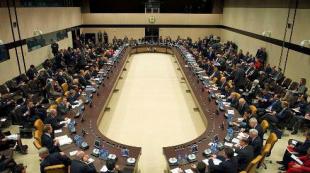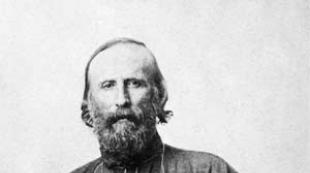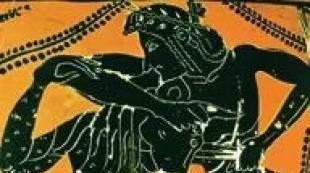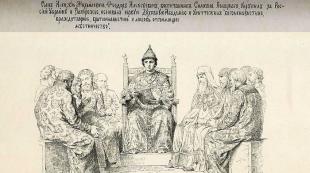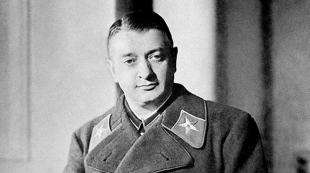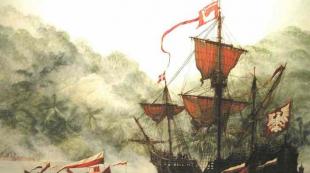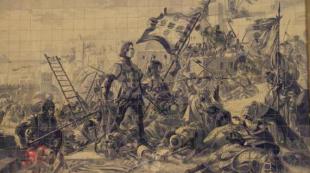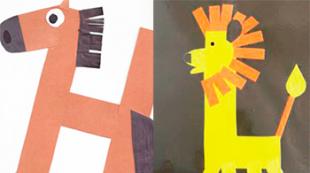Who should give the military salute. Performing a military greeting: military rituals, differences in performing a greeting. See what "Salute of military honor" is in other dictionaries
font size
CHARTER OF THE INTERNAL SERVICE OF THE ARMED FORCES OF THE RUSSIAN FEDERATION (approved by Decree of the President of the Russian Federation dated 14-12-93) (as amended on 18-12-2006) (2020) Actual in 2018
Military salute
43. The military salute is the embodiment of the comradely solidarity of military personnel, evidence of mutual respect and a manifestation of a common culture. All military personnel are obliged to greet each other when meeting (overtaking), strictly observing the rules established by the Military Regulations of the Armed Forces Russian Federation. Subordinates and juniors in military rank greet first, and with an equal position, the first to greet is the one who considers himself more polite and well-mannered.
44. Soldiers are required, in addition, to welcome:
The Battle Banner of the military unit, as well as the Naval flag with the arrival on the warship and upon departure from it;
Funeral processions accompanied by military units.
44. Military units and subunits, while in service, greet on command:
President and Minister of Defense of the Russian Federation;
Marshals of the Russian Federation, generals of the army, admirals of the fleet, colonel generals, admirals and all direct superiors, as well as persons appointed to lead the inspection (inspection) of a military unit (unit).
To greet in the ranks at the place of the above persons, the senior commander gives the command "Attention, alignment to the RIGHT (to the LEFT, to the MIDDLE)", meets them and reports.
For example: "Comrade Major General. The 110th motorized rifle regiment was built for a general regimental evening verification. The regiment commander, Colonel Petrov."
When building a military unit with a Battle Banner (at a parade, drill review, during the military oath taking, etc.), the report indicates the full name of the military unit with a list of the honorary titles and orders assigned to it. When saluting in the ranks on the move, the chief gives only a command.
46. Military units and subunits also welcome on command:
Tomb of the Unknown Soldier;
Mass graves of soldiers who fell in the battles for the freedom and independence of the Fatherland;
Battle Banner of a military unit, and on a warship the Naval ensign when it is raised and lowered;
Funeral processions accompanied by military units;
each other when meeting.
47. A military greeting by the troops in the field on the spot, the President and Minister of Defense of the Russian Federation is accompanied by the performance of the "Oncoming March" and the National Anthem by the orchestra.
When a military unit salutes direct superiors from the commander of its unit and above, as well as persons appointed to lead the inspection (check), the orchestra performs only the "Counter March".
48. When out of order, both during classes and in their free time, military personnel of military units (subdivisions) greet their superiors at the command "Attention" or "Stand up. Attention". At headquarters and in institutions, only direct superiors and persons appointed to lead the inspection (inspection) are welcomed on command. officers." The command "Attention", "Get up. Attention" or "Comrade officers" is given by the senior of the present commanders (chiefs) or the serviceman who first saw the arriving commander (chief). At this command, all those present stand up, turn towards the arrived commander (chief) and take a combat stance, and officers, ensigns and midshipmen, with a headdress on, in addition, put their hands on it. The eldest of the present commanders (chiefs) approaches the newcomer and reports to him. The arriving commander (chief), having accepted the report, gives the command “At ease” or “Comrade officers”, and the one who reported repeats this command, after which all those present take the position “at ease”. Officers, warrant officers and warrant officers, when wearing a headdress, lower their hand and subsequently act on the instructions of the commander (chief) who has arrived.
49. The command "Attention" or "Get up. Attention" and the report to the commander (chief) are carried out at his first visit to the military unit or unit on a given day. The command "Smirno" is given to the ship's commander each time he arrives on the ship (disembarks from the ship). In the presence of the senior commander (chief), the command for a military greeting is not given to the junior and the report is not carried out. When conducting classroom classes, the command "Attention", "Stand Attention" or "Comrade Officers" is given before each lesson and at its end. The command "Attention", "Stand at attention" or "Comrade officers" before the report to the commander (chief) is given if other military personnel are present, in their absence, the commander (chief) is only reported.
50. During the performance of the National Anthem, servicemen in the ranks take a combat stance without a command, and unit commanders from a platoon and above, in addition, put their hands on their headgear. Servicemen who are out of order, during the performance of the anthem, take a combat stance, and when wearing a headdress, they put their hand to it.
51. The command to perform a military greeting to military units and subunits is not given:
When raising a military unit or subdivision on alert, on the march, as well as in tactical exercises and exercises;
At command posts, communication centers and places of combat duty (combat service);
At the firing line and the firing (starting) position during firing (launches);
At airfields during flights;
During the performance of construction, household work or work for educational purposes, as well as during classes and work in workshops, parks, hangars, laboratories;
During sports and games;
When eating and after the signal "Clear" before the signal "Rise";
In rooms for patients.
In these cases, the chief or senior only reports to the arriving chief.
For example: "Comrade Major. The 2nd motorized rifle company is performing the second firing exercise. The company commander is Captain Ilyin."
The units participating in the funeral procession do not perform the military salute.
52. At solemn meetings, conferences held in a military unit, as well as at performances, concerts and in the cinema, a command for a military greeting is not given and the commander (chief) is not reported. At general meetings of personnel for a military greeting, the command "Attention" or "Stand at attention" is given and reported to the commander (chief).
For example: "Comrade Lieutenant Colonel. The personnel of the battalion arrived at the general meeting. The chief of staff of the battalion, Major Ivanov."
53. When the chief or senior addresses individual servicemen, they, with the exception of the sick, take a military stance and name their position, military rank and last name. When shaking hands, the elder gives his hand first. If the senior is not wearing gloves, the junior takes off the glove before shaking hands. right hand. Soldiers without headgear accompany the handshake with a slight tilt of the head.
54. To the greeting of the chief or senior ("Hello, comrades"), all military personnel who are in the ranks or out of order respond: "We wish you good health"; if the chief or senior says goodbye ("Goodbye, comrades"), then the military personnel answer: "Goodbye." At the end of the answer, the word "comrade" and the military rank are added without indicating the type of troops or service.
For example, when answering: sergeants, foremen, warrant officers, midshipmen and officers "We wish you good health, comrade junior sergeant", "Goodbye, comrade chief foreman", "We wish you good health, comrade midshipman", "Goodbye, comrade lieutenant", etc. P.
55. If the commander (chief) in the order of service congratulates the serviceman or thanks him, then the serviceman answers the commander (chief): "I serve the Fatherland." If the commander (chief) congratulates the military unit (subdivision), it answers with a drawn-out triple "Hurray", and if the commander (chief) thanks, the military unit (subdivision) replies: "We serve the Fatherland."
The procedure for presenting to commanders (chiefs) and persons arriving for inspection (verification)
56. Only the commander of the unit is introduced to the senior commander (chief) who arrives at the military unit. Other persons are introduced only when the senior commander (chief) directly addresses them, naming their military position, military rank and surname.
57. Military personnel introduce themselves to their immediate superiors:
When appointed to a military position;
When surrendering a military post;
When conferring a military rank;
When awarded with an order or medal;
When leaving on a business trip, for treatment or on vacation and upon return.
When introducing themselves to their immediate superior, servicemen state their military position, military rank, last name and the reason for the introduction.
For example: "Comrade major. Commander of the 1st motorized rifle company, Captain Ivanov. I introduce myself on the occasion of conferring the military rank of captain on me."
58. Officers and warrant officers newly appointed to the regiment are introduced to the regiment commander and then to his deputies, and upon receipt of the appointment to the company, to the battalion commander, company commander and their deputies. The regimental commander introduces the newly arrived officers officers regiment at the next meeting of officers or formation of the regiment.
59. When inspecting (checking) a military unit, its commander introduces himself to the arriving person appointed to lead the inspection (check), if he is in a military rank equal to the commander of the unit, or a rank higher than him; if the inspector (checker) is lower in rank than the commander of the military unit, then he is presented to the commander of the military unit. Before the beginning of the inspection (inspection), the commander of the military unit presents the inspecting (inspecting) commanders of the inspected (inspected) units.
60. When visiting the inspecting (checking) units, the commanders of these units meet him and report to him. If the inspector (checker) arrives at the unit together with the commander of the military unit, then the commander of the unit reports to the inspector (checker) if the latter is in an equal military rank with the commander of the military unit or is higher in rank than him. If during the inspection (check) a senior commander (chief) arrives, then the commander of the military unit (unit) reports to him, and the inspector (checker) introduces himself.
61. When visiting a military unit (ship) by the President of the Russian Federation, the Minister of Defense of the Russian Federation and his deputies, commanders-in-chief of the branches of the Armed Forces, members of the Government of the Russian Federation, the commander of the military unit (ship) meets, reports and accompanies these persons who have arrived at the location of the military unit ( on the ship), and upon arrival at the invitation to the military unit (on the ship) of the participants of the Great Patriotic War, soldiers-internationalists, veterans of the Armed Forces, honored workers of science, culture and art, representatives of public organizations of Russia, foreign states and other honored visitors, the commander of the military unit (ship) meets them, introduces himself and accompanies them, without reporting. In memory of the visit to the military unit (ship), honorary visitors are presented to them for the corresponding entry in the Book of Honored Visitors (Appendix 4).
62. When military personnel arrive at a military unit (unit) to carry out certain official assignments of senior commanders (chiefs), the commander of a military unit (unit) introduces himself only as a senior in military rank. In other cases, the arrivals introduce themselves to the commander of the military unit (subdivision) and report on the purpose of their arrival.
63. All instructions of inspectors (verifiers) or military personnel performing individual official assignments of senior commanders (chiefs) are transmitted through the commander of a military unit. The named persons are obliged to inform the commander of the military unit (unit) about the results of the inspection (verification) or the performance of the official assignment assigned to them. When conducting a survey of military personnel of a military unit (unit), inspectors (verifiers) are guided by the requirements of Appendix 8.
Armed Forces of the Russian Federation. Subordinates (younger in military rank) are the first to greet their superiors (senior in military rank), and with an equal position, the one who considers himself more polite and well-mannered is the first to greet.
47. Military personnel are required to perform a military greeting, paying tribute to:
tomb Unknown Soldier;
The State Flag of the Russian Federation, the Battle Banner of the military unit, as well as the Naval Flag at each arrival on the ship and departure from the ship;
48. Military units and subunits, while in service, greet on command:
the President of the Russian Federation, the Chairman of the Government of the Russian Federation and the Minister of Defense of the Russian Federation;
marshals of the Russian Federation, generals of the army, admirals of the fleet, colonel generals, admirals and all direct superiors, persons appointed to lead the inspection (inspection) of a military unit (subunit), as well as persons who arrived to present the military unit of the Battle Banner and (or ) state award.
To greet in the ranks at the place of the indicated persons, the senior commander gives the command "QUIET, alignment to the RIGHT (to the LEFT, to the MIDDLE)", meets them and reports.
For example: "Comrade Major General. The 46th Tank Regiment was built for a general regimental evening check. The regiment commander, Colonel Orlov."
When building a military unit with the State Flag of the Russian Federation and the Battle Banner (at a parade, drill review, during taking the Military oath (taking an obligation), etc.), the report indicates the full name of the military unit with a list of the honorary titles and orders assigned to it .
When saluting in the ranks on the move, the chief gives only a command.
49. Military units and subunits greet each other on command at a meeting, and also perform a military greeting, paying tribute to:
Tomb of the Unknown Soldier;
mass graves of soldiers who fell in battles for the freedom and independence of the Fatherland;
The State Flag of the Russian Federation, the Battle Banner of a military unit, and on a warship - the Naval Flag when it is raised and lowered;
funeral processions accompanied by military units.
50. The military salute by the troops in the field to the President of the Russian Federation, the Chairman of the Government of the Russian Federation and the Minister of Defense of the Russian Federation is accompanied by the performance of the "Oncoming March" and the National Anthem of the Russian Federation by the orchestra.
When a military unit salutes direct superiors from the commander of its military unit and above, persons appointed to lead the inspection (check) of a military unit (subdivision), as well as persons who have arrived to present the military unit with the Battle Banner and (or) state award, the orchestra performs only "Counter March".
(see text in previous edition)
51. When out of order, both during classes and in their free time, military personnel of military units (subdivisions) greet their commanders at the command "Attention" or "Stand up. Attention".
At the headquarters, only direct superiors and persons appointed to lead the inspection (check) are welcome on command.
In classes outside the ranks, as well as at meetings where only officers are present, the command "Comrade officers" is given to greet commanders (chiefs).
The commands "Attention", "Get up. Attention" or "Comrade officers" are given by the senior of the present commanders (chiefs) or the serviceman who first saw the arriving commander (chief). At this command, all those present stand up, turn towards the arrived commander (chief) and take a combat stance, and when wearing a headdress, in addition, they put their hand on it.
The eldest of the present commanders (chiefs) approaches the arrived commander (chief) and reports to him.
The arriving commander (chief), having accepted the report, gives the command "FREE" or "COMRADE OFFICERS", and the reporter repeats this command, after which all those present assume the position "at ease", with the headgear on, lower their hand from the headgear and subsequently act according to instructions of the arrived commander (chief).
52. The command "Attention" or "Stand at attention" and the report to the commander (chief) are carried out at his first visit to a military unit or subunit on a given day. The command "Smirno" is given to the ship's commander each time he arrives on the ship (disembarks from the ship).
In the presence of the senior commander (chief), the command for a military greeting is not given to the junior and the report is not made.
When conducting class exercises, the commands "Attention", "Stand Attention" or "Comrade Officers" are given before the start of each lesson and at its end.
The commands "Attention", "Stand at attention" or "Comrade officers" before the report to the commander (chief) are given if other military personnel are present, in their absence, the commander (chief) is only reported.
53. During the performance of the National Anthem of the Russian Federation, military personnel in the ranks take a combat stance without a command, and unit commanders from a platoon and above, in addition, put their hands on their headgear.
Servicemen who are out of order, during the performance of the National Anthem of the Russian Federation, take a combat stance, and when wearing a headgear, they put their hand to it.
54. The command to perform a military greeting to military units and subunits is not given:
when raising a military unit (subunit) on alert, on the march, as well as in tactical exercises and exercises;
at command posts, communication centers and in places of combat duty (combat service);
at the firing line and the firing (starting) position during firing (launches);
at airfields during flights;
during classes and work in workshops, parks, hangars, laboratories, as well as when performing work for educational purposes;
during sports and games;
when eating and after the signal "Clear" before the signal "Rise";
A military salute or salute is a gesture or other action used to show respect by the military. The history of saluting in the army goes back hundreds of years. Military traditions of different countries and times were extremely diverse. Hand gestures, rifle and cannon shots, banner hoisting, headgear removal and other means were used, all to show respect and reverence.
There is a beautiful legend about the first salute.
Sir Francis Drake, the legendary sailor and pirate, in 1588, hosting the Queen of England Elizabeth (far from the standard of beauty), pretended to be blinded by her beauty, covering his eyes with his palm, and, allegedly, this tradition was born.
According to another version, more plausible, the knights raised the visor of the helmet with their unarmed hand, thus greeting their comrades. Today it is believed that the modern gesture of saluting in the army is rooted precisely in the second. Over time, putting your right hand on your headgear has become mandatory for showing respect in all regular (and not only) armies of the world.
Interesting! The modern salute of military honor comes from Great Britain, which is documented by military regulations.
How to salute in the armies of the peoples of the world: the diversity of traditions

In Britain, the military salute is a tribute to the highest-ranking officer and the Queen in whose name he acts.
Important! A prerequisite for a hand gesture, for example, is the presence of a headdress: beret, cap, etc. Without a headdress (indoors), you should stand at attention.
Prudish British etiquette puts forward the most severe requirements for the criteria for performing a salute. How to properly salute in the army, popularly explains the military regulations:
- fingers should be firmly pressed together, the thumb is located along the palm turned outward, the middle finger is to the right and slightly above the eyebrows. As a result, the center of the conditional axis of the hand must be fixed at the level of the head, and the middle finger should be approximately flush with the base of the cockade;
- salute only with the right hand;
- the position of the hand should be maintained until a response gesture follows.
During combat operations, statutory salutes are generally prohibited, mainly due to the sniper threat. At the same time, you should not forget about common sense, because a military base saturated with officers will turn into a farce in a short time, if there were no exceptions here.
The salute in the French army is generally identical to the British. The armies of Australia and New Zealand also inherit the military etiquette of their former mother country. In the US Army, however, they practice saluting with a covered and uncovered head, provided that the hands are free. The Israeli army practically believes that it is not worth burdening soldiers with such rituals during barracks life, therefore it does not oblige anyone to anything.
How did they salute in the Russian army?

The Russian army was created in the European manner, adopting everything, including statutory traditions and military etiquette. Emperor Peter I, its direct creator, was guided by Prussia, Austria, Sweden and other leading military powers of that time. In the imperial army, the military salute was called saluting, and the matter was not limited to one gesture of removing the hat, the military, when meeting with a colleague or boss, had to perform a whole series of bows and squats in order to express deep respect to him, depending on social status. The location (street or room) during the salute also played an important role.
With the advent of massive headdresses in the Russian Imperial Army, such as a helmet and a shako, fastened with a strap at the chin, taking off and bowing became extremely problematic, namely long and clumsy. It was decided to abandon them, and replace them with a long-accepted salute in Europe with a bladed weapon or a movement of the hand to the headdress.
In parallel, for a long time they coexisted and existed, side by side, different options for saluting in the army. However, finally there was a need to reform and unify this part of military etiquette. Saluting by offering a hand to a headdress was gaining more and more popularity, because of its simplicity and clarity. So, the universal form of the ritual was found. Initially, among the officers, preference was given to "trump cards" with two fingers of the right hand, middle and index, the so-called "Polish" greeting, this tradition has been preserved in the Polish Army to this day. The origins of this movement are easily guessed by a simple gesture of removing the hat, when these two fingers were placed on top of the brim, and the thumb supported the headdress from below.
V Russian Empire the second half of the 19th century, a new form of saluting by bringing a brush to the visor of a headdress became a cultural norm. However, the straightened fingers of the hand should have been brought to the visor with the palm down, which was recorded in the military regulations of the 1891 edition in this way:
- banners should be saluted at attention;
- from the crew should salute, with a gesture of moving the hand to the headdress;
- to greet the chief, one should bring the brush to the headgear with straightened fingers, palm down and slightly outward, keep the elbow at shoulder level, while the gaze should be on the commander and accompany him with his eyes;
- during the salute, the military should not take off his hat to anyone.
Honor was supposed to be given to the authorities, members of the royal family, colleagues, the regimental banner, etc. All officers, and all the lower ranks without exception, had to greet each other when they met, putting their right hand to the visor.
After the revolution, the Soviet government significantly reduced the ritual of saluting in the Red Army, but retained the historical basis. After the collapse Soviet Union, in the Russian Federation, the military are faithful to traditions, therefore they teach soldiers, how to salute in the army, modeled on 1975, although the very expression "salute", due to various socio-cultural reasons, has become an anachronism and is practically not used.
Performing a military salute on the spot and on the move. The procedure for performing a military salute out of formation
Performing a military salute on the spot. The procedure for performing a military salute out of formation
Performing a military salute on the spot out of formation without a headgear
To perform a military salute in place outside the ranks without a headgear, three to four steps before the chief (senior) turn in his direction, take a drill
stand and look him in the face, turning his head after him.
When the chief (senior) passes the person performing the military greeting, put his head straight.
Learning a military salute on the spot out of formation without a headdress in divisions into two counts
To perform a military salute on the spot without a headgear, a command is given in divisions into two counts, for example: “To perform a military salute in place without a headgear, the head from the front (right, left, rear), by divisions: “do - ONCE , do - TWO.
When the chief approaches, for three or four steps on the “do - ONCE” account, take the position of the combatant, if necessary - turn in his direction, while putting your foot down, vigorously turn your head with a raised chin towards the chief, look in the face of the chief, turning after him head.
Performing a military salute on the spot out of formation in a headdress
Performing a military salute on the spot out of formation in a headdress
To perform a military salute in place out of formation in a headdress, three to four steps before the chief (senior) turn in his direction, take a combat stance, attach the right hand to the headdress in the shortest possible way so that the fingers are together, the palm is straight, the middle finger touched the lower edge of the headdress (near the visor), and the elbow was at the line and height of the shoulder and looked into his face, turning his head after him. When turning the head towards the chief (senior), the position of the hand at the headdress remains unchanged.
When the chief (senior) passes the person performing the military greeting, put his head straight and at the same time lower his hand.
Learning a military greeting on the spot out of formation in a headdress by division into two counts
To perform a military salute on the spot out of formation in a headdress, a command is given in divisions into two counts, for example: “To perform a military salute in place in a headdress, the chief from the front (right, left, back), by divisions: “do - ONCE , do - TWO.
When the chief approaches, in three or four steps according to the “do - ONCE” account, take the position of the combatant, if necessary, turn in his direction, attach the right hand to the headdress in the shortest possible way so that the fingers are together, the palm is straight, the middle finger touches the bottom the edges of the headdress (near the visor), and the elbow was at the line and height of the shoulder and look into his face, turning his head after him. When turning the head towards the chief (senior), the position of the hand at the headdress remains unchanged.
According to the account “do - TWO”, they put the head straight and take the position “at ease”.
Typical mistakes when performing a military greeting on the spot in a headdress and without it
The military salute is completed in less than three or four steps. The hand to the headgear is attached incorrectly:
The serviceman did not turn his head towards the chief and did not look him in the face.
Performing a military salute on the move. The procedure for performing a military salute out of formation
Performing a military salute while out of formation without a headgear
To perform a military salute in motion out of formation without a headgear, three or four steps before the chief (senior), simultaneously with setting the foot, stop moving with your hands, turn your head in his direction and, continuing to move, look at his face. Having passed the chief (senior), put your head straight and continue to move with your hands.
Performing a military salute without headgear while out of formation

With the second step, put your head straight.
Learning a military salute while moving out of formation without a headdress in divisions into three (four) counts
To perform a military salute in place out of formation without a headgear, according to divisions into three (four) counts, the command is given: “Military salute in motion, chief on the right (left), according to divisions: do - ONE, two, three (four) ".
According to the “do - ONCE” count, take a step with your left foot, at the same time as placing it on the ground, stop moving with your hands and turn your head towards the boss.
According to the account “two, three (four)”, continue the movement with clasped hands and turned head.
According to the next count “do - ONCE” under the left leg and at the same time as placing the left foot on the ground, put the head straight and continue to move with the hands.
On the account "two, three (four)" having made two (three) free steps.
According to the next “do - ONCE” account, repeat the exercise in the same order with a pace of movement of 60-70 steps per minute.
Performing a military salute in motion out of formation in a headdress
When wearing a headgear, simultaneously with placing your foot on the ground, turn your head and put your right hand on the headgear, keep your left hand motionless at the hip; having passed the chief (senior), simultaneously with placing the left foot on the ground, put the head straight and lower the right hand.
When overtaking a chief (senior), perform a military salute with the first step of overtaking.
With the second step, put your head straight and lower your right hand.
Learning the military salute while out of formation in a headdress in divisions into six counts
To perform a military salute in motion out of formation in a headdress, according to divisions into six counts, the command is given: “Military salute in motion, chief on the right (left), according to divisions: do - ONE, two, three, four, five, six.
According to the “do - ONCE” count, take a step with your left foot and, with your foot on the ground, turn your head towards the boss, at the same time put your hand on the headgear; lower your left hand down to your thigh.
According to the account “two, three, four”, take steps with the right (left) foot; passing the chief one or two steps.
According to the count of “five”, simultaneously with placing the left foot on the ground, put the head straight, lower the right hand from the headgear down.
On the account "six" the right leg, attach to the left, and lower the right hand to the thigh.
Performing a military salute when overtaking a chief without a headdress
When overtaking a chief, a military greeting without a headgear is given as follows: at the first step of overtaking with feet on the ground, stop moving with your hands, vigorously lower them along the body, at the same time turn your head with a raised chin towards the chief. On the second step, put your head straight and continue moving your hands to the beat of the step.
Performing a military salute when overtaking a chief in a headdress

Performing a military salute when overtaking a chief in a headdress
When overtaking a chief, a military greeting in a headdress is given as follows: at the first step of overtaking with feet on the ground, stop moving with your hands, energetically lower them along the body, turn your head with a raised chin towards the chief. Simultaneously with the turn of the head, attach the right hand to the headdress, keep the left hand along the body. On the second step, put your head straight, lower your right hand and continue moving your hands to the beat of the step.
Typical mistakes when performing a military salute in motion in a headdress and without it:
The military salute is completed in less than three or four steps;
The hand to the headgear is attached incorrectly:
The fingers of the right hand are not together, the palm is bent, the middle finger does not touch the lower edge of the headdress (near the visor);
Changed the position of the hand when turning the head towards the boss;
The hand is applied to the headdress not in the shortest way, but through the side;
The serviceman did not turn his head towards the chief and does not look him in the face;
Together with the turn of the head, the body is turned;
First, turn the head, and then put (lower) the hand.
This is called a military salute, people say honor. Sheer nonsense, and judging by the charter, they are required by the charter to put their hand to their heads when greeting - a military salute - according to the charter. Cancel one section - change the entire charter! This will never happen! The charter does not need to be changed, only a small adjustment!
51. When out of order, both during classes and in their free time, military personnel of military units (divisions) greet their superiors at the command “Attention” or “Stand up. The command “Attention”, “Get up. Attention” and reported to the commander (chief). For example: “Comrade lieutenant colonel.
18:20 - today I met soldiers twice who performed a military salute towards me. A military salute is usually mutual, and therefore inappropriate if one of the greeters is not dressed in a military uniform. Also, a military greeting is not given without a headdress (there is a wording “puts a hand on the headdress”).

At general meetings of personnel for a military greeting, the command “QUIET” or “STAND UP. When conducting classroom lessons, the teams “Quietly”, “Stand up. Attention” or “Comrade Officers” are served before the start of each lesson and at the end of it. Attention” or “Comrade Officers” is served by the eldest of the present commanders (chiefs) or the serviceman who first saw the arriving commander (chief). Officers, warrant officers and warrant officers, when wearing a headdress, lower their hand and subsequently act on the instructions of the commander (chief) who has arrived.
Is there a document on the basis of which I am obliged to give military honor (greeting) to the head of the unit? I asked the head of the guard, the answer was slurred, but unequivocal - it should. I asked the same question on the official website of the Ministry of Emergency Situations. The results are deplorable.
To greet in the ranks at the place of the above persons, the senior commander gives the command “Attention, alignment to the RIGHT (to the LEFT, to the MIDDLE)”, meets them and reports. The 46th Tank Regiment was built for general regimental evening verification.
The military salute, which is called “salute” in army life, has nothing to do with the police, for a long time service in the gendarmerie, the secret police in the Republic of Ingushetia was not considered a glorious deed, valor. Now it makes no sense to put someone else's prowess on the modern police. The police is a body of protection from the population of gangster-oligarchic capital, operates according to the LAW, which currently contradicts the concepts of Humanity, morality and the Conscience of Man.
Are military personnel obliged to give a military salute to cops, senior in rank?
It happens that you go around the city and meet a cop - a major or an underground, and I'm just a starley, should I give a military greeting to them? It seems that the rank is higher, but we belong to different structures ... Well, everything is clear with the military, but what are the police officers doing? They are not military.
But it always seemed to me that simply introducing yourself and greeting a person politely is enough to start a conversation between a policeman and a citizen. Probably because I am a military man and for me personally it was savagery to give a military greeting to a civilian by a semi-civilian policeman.
.jpg)
Well, to be precise, they don’t give honor (they don’t scatter honor in passing), but the military give a “military salute”, the policemen give a “greeting”. The police are not the police for you.
43. The military salute is the embodiment of the comradely solidarity of military personnel, evidence of mutual respect and a manifestation of a common culture. All military personnel are obliged to greet each other when meeting (overtaking), strictly observing the rules established by the Combat Charter of the Armed Forces of the Russian Federation. Subordinates and juniors in military rank greet first, and with an equal position, the first to greet is the one who considers himself more polite and well-mannered. Chiefs and seniors, addressing subordinates and juniors in the service, call them by military rank and surname or only by rank, adding in the latter case the word “comrade” before the rank.
But seriously, Old, who still worked in the police.
When a soldier, for example, or a policeman salutes, he symbolically confirms: I have a T-I, assuring the citizen that he will treat him like a human being. The policemen perform other functions - to control and suppress the people, so how can there be honoring the Citizens of the Country? So the policemen are the concrete heirs of the Nazis.
Whether to give “honor” (military) to the chief
55. At solemn meetings, conferences in a military unit, as well as at performances, concerts and in the cinema, a command for a military greeting is not given and the commander (chief) is not reported. 56. When a chief or a senior addresses individual servicemen, they, with the exception of the sick, take a combat stance and name their military position, military rank and surname. When shaking hands, the elder gives his hand first.
To greet direct superiors, the command “attention”, “alignment to the right (to the left, to the middle)” is given. Attention” or “Comrade Officers” is served before each lesson and at the end of it. In the presence of the senior commander (chief), the command for a military greeting is not given to the junior and the report is not carried out. If the commander (chief) in the order of service congratulates the serviceman or thanks him, then the serviceman answers the commander (chief): "I serve the Russian Federation."
Example: “comrade commander, the 4th rifle regiment for inspector shooting has been built. In the same order, a Red Army soldier, who has been appointed senior over several other Red Army soldiers, greets direct superiors. His exemplary report: “Comrade Lieutenant, the team of Red Army soldiers of the 2nd division, assigned to work in the target yard, has been built. The team leader is the Red Army soldier Vasilyev.

In classes outside the ranks, as well as at meetings where only officers are present, the command “Comrade officers” is given to greet commanders (chiefs). At the headquarters, only direct superiors and persons appointed to lead the inspection (check) are welcome on command. I asked the nachkar - he answered that if I am a foreman of the INTERNAL SERVICE, then I must comply with the charter of the internal service. I was surprised, because in any of our documentation I did not meet references to this charter. On the official website of the Ministry of Emergency Situations asked the same question.
Everything else is orders and instructions. I asked the nachkar - he answered that if I am a foreman of the INTERNAL SERVICE, then I must comply with the charter of the internal service. Major Ivanov, Chief of Staff of the Battalion.

55. If the commander (chief) in the order of service congratulates the serviceman or thanks him, then the serviceman answers the commander (chief): "I serve the Fatherland." When referring to the military personnel of the guards formations and military units, the word “guards” is added before the military rank. For example: “Comrade of the guard foreman of the 1st article”, “Comrade of the guard colonel”. The personnel of the battalion arrived at the general meeting.
64. Servicemen must constantly serve as an example of high culture, modesty and restraint, sacredly observe military honor, protect their dignity and respect the dignity of others. They must remember that their behavior is judged not only about them, but also about the honor of the Armed Forces as a whole. Relations between military personnel are built on the basis of mutual respect. On matters of service, they should address each other as “you”. In personal appeal, the military rank is called without indicating the type of troops or service. 71. The rules of military courtesy, behavior and military greetings are also obligatory for citizens who are in the reserve or who are retired, when they wear military uniforms. They must strictly observe the established rules for wearing military uniforms.
should a police officer salute
But no one forbade them to salute. For example, yesterday the traffic police inspector saluted me, introduced himself, checked the documents and wished me a happy journey. I have no choice but to say “thank you”. He called himself there, called the unit. I have no other goal. I just passed by and lingered a little on this site. Having received an answer (convincing), I will go on my way.
